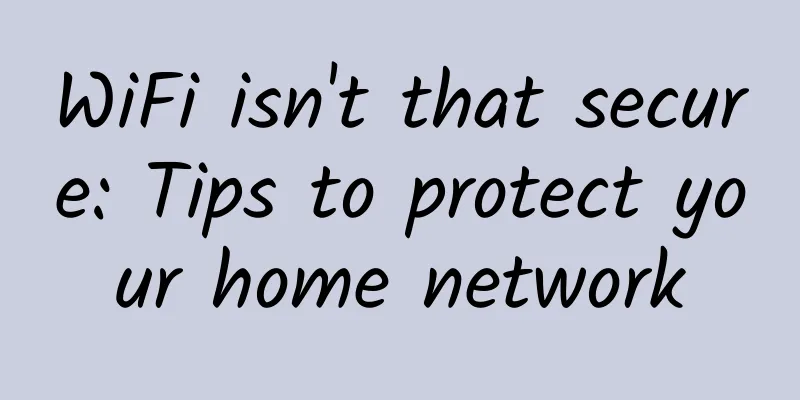WiFi isn't that secure: Tips to protect your home network

|
Wireless routers have been attacked frequently recently. Home users who used to think that network security had nothing to do with them can't help but feel the danger. Home wireless routers are not only the home Internet center, but also the control center of smart home devices. Once attacked by hackers, not only will the user's personal privacy and property be stolen, but even their lives will be disturbed. Not only that, after being attacked, their smart devices and smart home devices may become zombie networks, controlled by hackers, and attack other devices on the network.
Step 1: Change the default administrator account and password The first and simplest thing to do to protect the security of your home wireless router is to change the management account and password of the wireless router background. Many users use the default account and password, which makes it easy for hackers to take over the control of the wireless router at home. Once controlled, the DNS of the router will be tampered with. As a result, the web pages we visit will jump to the hacker's phishing webpage to steal the user's personal privacy and bank account information. Be sure to change the default account and password of the management background. It is best to use letters + numbers + symbols, and it is best to have more than 8 characters. The second method: Change the default WiFi password of the router Simple passwords are the most popular among home users, such as "88888888, 12345678, 11111111...", etc. These are common WiFi passwords in our daily lives. It is recommended that you also change it to letters + numbers + symbols, which is the least likely to be cracked. At the same time, some routers are set with a default SSID and WiFi password when they leave the factory, which are affixed to the nameplate of the device. The passwords of devices of the same model are generally the same, so we also recommend that users change to a new SSID and password. Tip 3: Update the firmware in time and turn off remote control Manufacturers will patch their own security vulnerabilities as soon as possible, so we recommend that you update the firmware of your wireless router in time. If you don't trust the router's self-upgrade, you can download the latest official firmware from the product's official website and then perform a local upgrade. After the upgrade is completed, it is best to immediately enter the router's management background and turn off the "remote management" function in the settings. Many routers have loopholes in the "remote management" function, which are exploited by hackers to break into the user's router. |
<<: Aryaka wins the 2016 Global Most Influential SD-WAN Solution Award
>>: IDC: Ethernet switch market grows 2%
Recommend
What does the interviewer want to test us about the three-way handshake and the four-way wave?
In an interview, three handshakes and four waves ...
Huawei Releases New Intelligent Network Equation: AI+SoftCOM = Autonomous Network That Never Fails
[51CTO.com original article] "Building a ful...
How 5G will transform the patient experience
[[374198]] Image source: https://pixabay.com/imag...
A brief discussion on SD-WAN troubleshooting
What do you do when your SD-WAN has a problem or ...
Introduce the commonly used encoders and decoders in Netty
[[359182]] The previous article introduced Netty ...
Sharktech: Shark data center 1Gbps unlimited traffic server Denver from $49/month, Los Angeles from $59/month
Sharktech, also known as SK Data Center, is a lon...
[Black Friday] TNAHosting: $12/year KVM-1GB/15G SSD/5TB/Chicago
TNAHosting is a relatively early established fore...
Prevent data encryption from hijacking the network: these four strategies you need to get
Encryption protects network traffic from hackers ...
20% off for edgeNAT, 1G memory package in Korea/Hong Kong/US data center starts from 48 yuan per month
edgeNAT is a Chinese VPS hosting company, founded...
How to build a universal smart IoT gateway by reducing the data sampling rate
【51CTO.com Quick Translation】Although there are m...
From Wi-Fi to Wired: Exploring the Role of Cable in Wireless Networks
In an increasingly connected world, wireless netw...
"All-optical wireless starry sky" illuminates the road of intelligent manufacturing of Jinya Electronics
With the advent of the fourth industrial revoluti...
TMThosting: Seattle high-security VPS monthly payment starts at $3.16, 20% off, supports Alipay
TMThosting is a foreign hosting company establish...
If 4G construction is "building roads", 5G is actually "building cities"...
"Now that I'm using 5G, I don't thin...
5G Development Trend Survey
Overview The COVID-19 incident in 2020 did not we...









